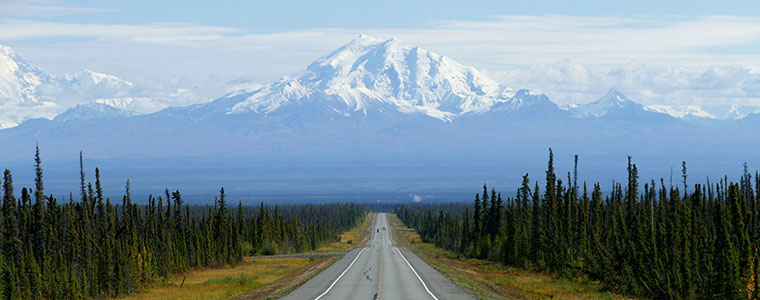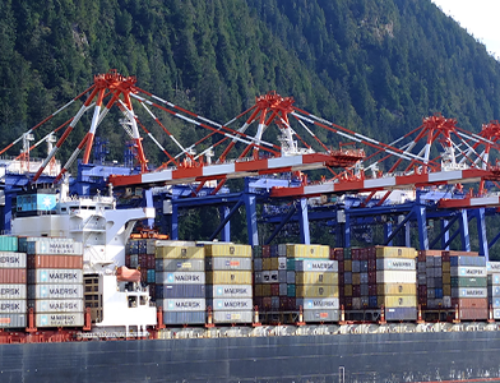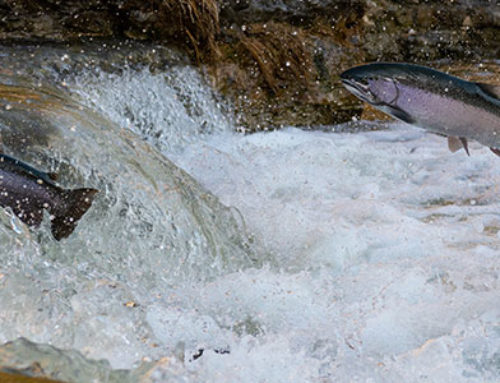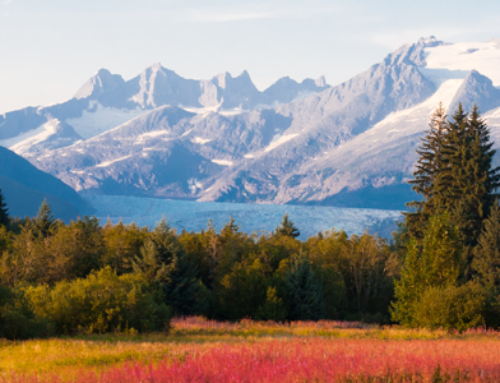The most important economic engine in the state—that’s how a report from the McKinley Research Group positions the oil and gas industry in Alaska. After contributing more than $180 billion in revenue to the state of Alaska—and $3.1 billion to state and local governments—it’s easy to see how the oil and gas industry has been such a powerful force in Alaska.
Let’s take a closer look at this economic engine—and the numbers behind it. First, let’s take a quick look at how closely the history of the industry intertwines with the history of the state overall.
Alaska’s Oil & Gas Industry—Yesterday and Today
1867
In 1867, the U.S. signed an agreement to purchase Alaska from the Russian Empire. Public opinion on the deal was sharply divided. In the press, the deal was referred to as “Seward’s folly,” and the phrase soon caught fire.
1957
In 1957, almost 100 years later, everything changed. A major oil deposit was discovered at Swanson River on the Kenai Peninsula. This discovery provided “economic justification” for statehood, according to Alaska governor Bill Egan. Two years later, Alaska officially entered the union as the 49th state.
1967
However, it wasn’t until 10 years later that Alaska’s future as an oil-and-gas powerhouse was truly secured. In 1967, the Prudhoe Bay oil field on Alaska’s North Slope was discovered. It was the largest oil discovery in North America at the time, and it remains the largest ever found in the U.S.
18 billion
Since then, the North Slope has produced more than 18 billion barrels of oil. Additionally, 95-98% Alaska’s yearly crude oil output comes from the region.
17 primary companies
Today, 17 “primary companies” contribute to Alaska’s oil and gas industry, which includes production, transportation, and refining activities. These companies include familiar names like BP (which was acquired by Hilcorp), Chevron, ConocoPhillips, ExxonMobil, and Shell.
Now that you have an overall sense of the history of the oil and gas industry in Alaska, let’s look at how it continues to impact the state.
Facts & Figures About the Oil & Gas Industry’s Impact on Alaska
5th
At its peak in 1988, Alaska was the top oil-producing state. Despite the significant size of the Prudhoe Bay discovery, Alaska’s overall oil production is currently on the decline. In 2021, it reached its lowest level in more than 40 years. Today, Texas sits at the top, and Alaska ranks fifth among producing states/regions.
2nd
Petroleum is a vital resource in Alaska, since many rural communities rely on diesel-powered generators for electricity. In fact, when it comes to the percentage of electricity generated from petroleum, Alaska ranks second-highest in the nation. (Hawaii is #1.)
3
The state is fueled by three refineries that produce gasoline, diesel, and jet fuel for consumption by Alaska residents. Petro Star operates refineries in Fairbanks and Valdez, and Tesoro operates a refinery in Nikiski.
Economic Impact
The oil and gas industry has made its mark on Alaska’s economy. Of course, there are the direct impacts—the jobs and revenue created from oil and gas production, refining, and transportation.
However, in order to fully appreciate the industry’s impact on the state, you also have to consider what the McKinley Research Group calls “indirect and induced economic linkages:”
- Indirect impacts include goods and services purchased by oil and gas companies to support their operations.
- Induced impacts cover instances when employees of oil and gas companies spend their own money in Alaska.
1 in 11 of Alaska jobs
When you account for direct, indirect, and induced jobs in Alaska, the oil and gas industry accounts for about 1 in 11 jobs in Alaska, excluding jobs associated with taxes and royalties paid to state and local governments. When you include the jobs funded by those taxes and royalties, the oil and gas industry accounts for 24% of all wage and salary jobs in Alaska.
$4 in wages for every $1
In other words, the oil and gas industry in Alaska has what’s called a “multiplier effect” on the economy. For every dollar earned by an oil and gas company employee, $4 additional dollars in indirect and induced wages are created in Alaska. Additionally, for every primary job, eight more are created in connection with the industry—and seven more are created when you consider those funded by taxes and royalties.
$119,458-$261,758
The industry also pays the state’s highest wages. In 2021, average oil industry wages ranged from $119,458–$261,758. Those in support services made up the lower end, with an average wage of $119,548. Those in drilling earned an average of $124,522. Finally, employees in producing took in an average of $261,758 (including bonuses). Overall oil and gas employees received an average wage of $180,475 in 2021.
Finally, the oil and gas industry is responsible for another big piece of the economics of Alaska—the state’s Permanent Fund.
The Alaska Permanent Fund by the Numbers
There are plenty of perks to living in Alaska, one of which is the yearly Permanent Fund Dividend (PFD).
1976
The Permanent Fund was established by Alaska constitutional amendment in 1976 to convert the state’s oil and mineral resources into a renewable financial resource for future generations.
1980
Four years after bringing the fund into existence, the Alaska Permanent Fund Corporation was established to manage the fund’s investments.
1982
In 1982, the first dividend check was distributed. The total? $1,000. That’s about the same buying power today as $3,141.85, according to the Bureau of Labor Statistics’ CPI Inflation Calculator.
$81 billion
Since then, the Alaska Permanent Fund Corporation has grown the Permanent Fund to a value of more than $81 billion, while continuing to issue yearly dividends to eligible Alaska residents.
$3,284
The exact amount of the dividend varies from year to year. The 2021 dividend was $1,114. The 2022 dividend was $3,284—quite a contrast. In fact, 2022’s payout is the highest in state history. The lowest? $331.29, distributed in 1984.
Oil, Gas, and the State of Alaska
The oil and gas industry had a profound effect on the history and development of the state of Alaska. As these statistics show, it also plays a vital role in the state’s economy today. Additionally, through its contributions to the Alaska Permanent Fund, the oil and gas industry is poised to impact generations of Alaska residents to come. Whether you work for the industry, work in an industry that directly or indirectly supports it, or simply live in the state of Alaska, you’ll experience the effects of the oil and gas industry today—and into the future.
Considering a move to Alaska? We’d be happy to help you get your belongings to your new home so you can get settled (and start establishing residency for the next PFD check)! Just reach out to one of our experts for a free quote to get started.
Tell us about your move!
 (907) 868-4756
(907) 868-4756


